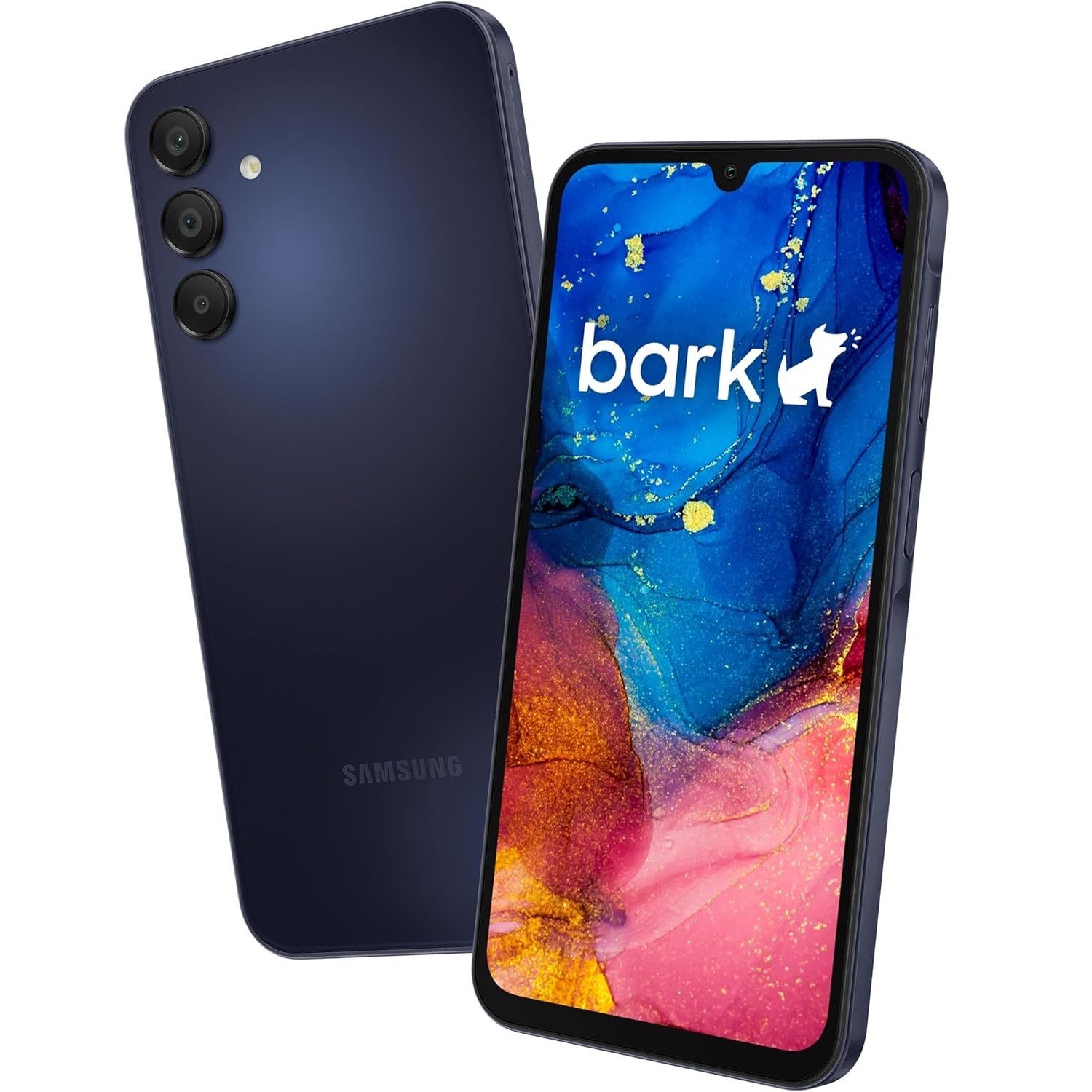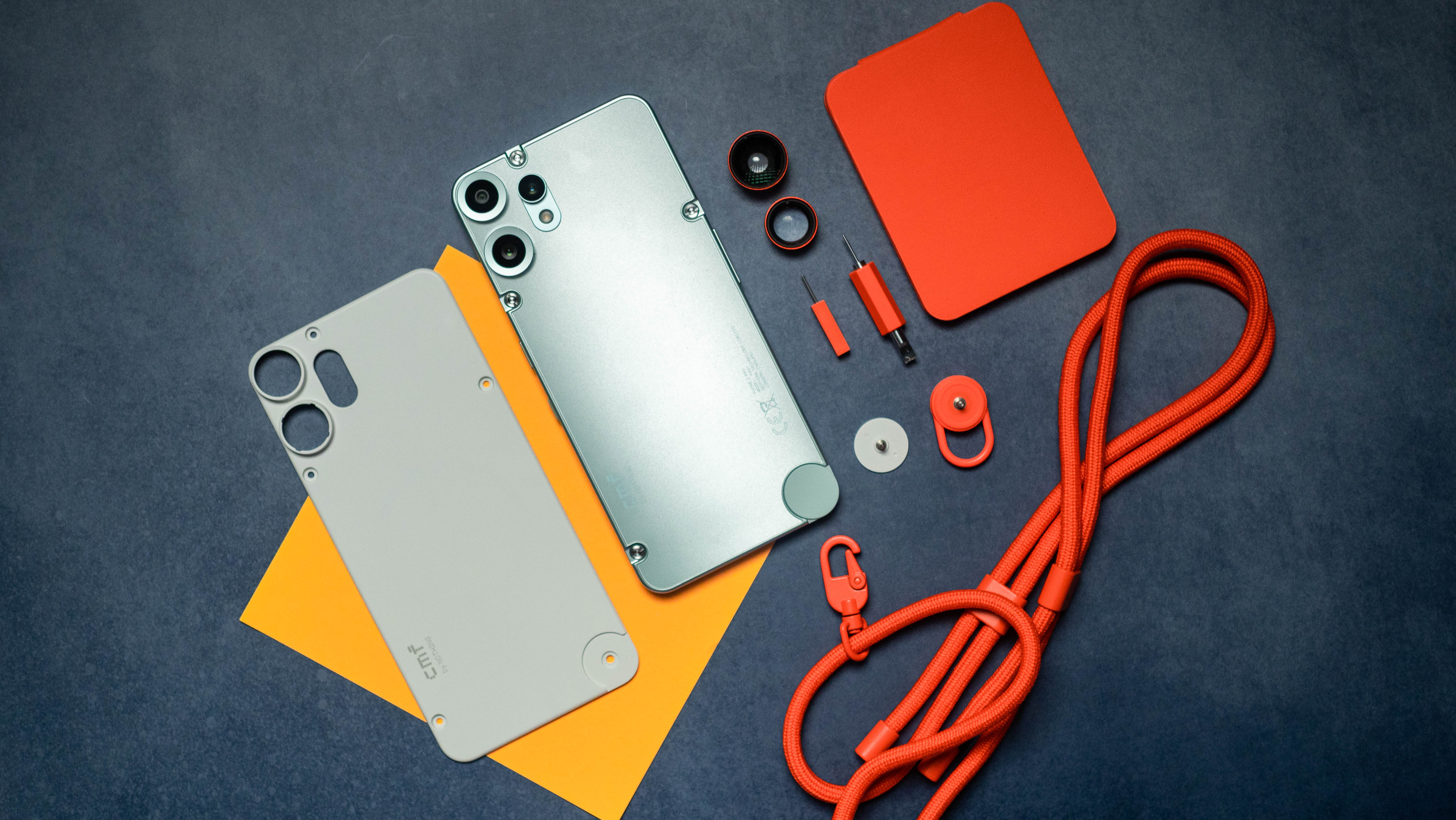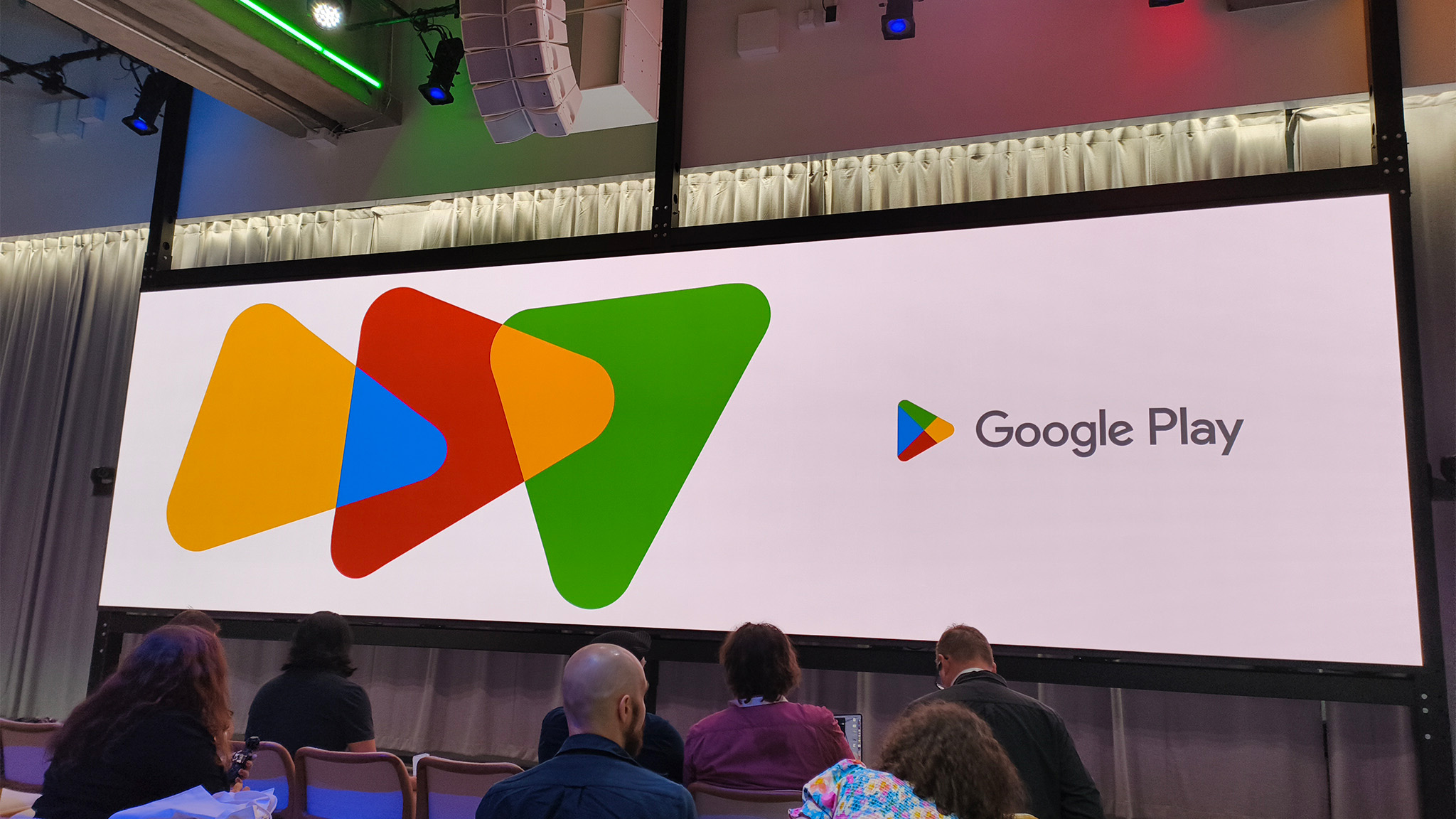Getting a phone for your kid this year? Here's what you need to consider
From kid's smartphones to parental controls, there's a lot to consider.

Choosing to get a smartphone for your child can be a daunting task. Are they really ready for a smartphone? Will they be ostracized by their friends without the right phone? How do you keep them safe online if they do get one?
Everyone's situation is different, so while my personal experience may not apply precisely to you, I've been through all of these thoughts and have some advice that might help give you peace of mind.
I've given my son several different smartwatches, phones, and tablets over the years to test and we've settled mainly on two things: a phone for games and Wi-Fi only communication, and a smartwatch with a SIM card for when he's out and about. If you're thinking of getting a smartphone for your kid this year, here are a few things to think about before hitting that buy button.
Does my child really need a phone?

Before even thinking of what kind of phone your child needs, consider the option of foregoing the phone entirely. Instead, one of the best kids smartwatches might be a better alternative for some kids or parents. My son's favorite is the T-Mobile SyncUP Kids Watch, which is free on T-Mobile when you activate it with the T-Mobile watch service (usually $10 per month).
Among excellent features like video calling, text and voice messaging, and real-time location tracking is the dinosaur game. Yes, the same game you play in Chrome when you don't have an internet connection. It seems funny to highlight this but it's one of the reasons my son loves it over other kid's watches, and it makes it easy for me to let him use it since the other features work so well.

If you're not a T-Mobile user, Google's Fitbit Ace LTE works on all U.S. networks and, as the Fitbit name suggests, is heavily focused on keeping your kids healthy through active fitness encouragement.
Fitbit does this by tracking activity via the advanced hardware on the watch—which is just as advanced as what's inside the more expensive Google Pixel Watch 3—and turns your child's active moments into tokens that can be spent playing arcade games on the watch.
Get the latest news from Android Central, your trusted companion in the world of Android
An LTE-enabled smartwatch might be a better fit for many kids, especially if you just want a line of communication with them.
But these aren't just any old video games. All of the games on the Fitbit Ace LTE require physical movement of some kind. From flinging your wrist like a fishing pole to catch fish, to aiming your spaceship to take out enemy ships, even the games will keep your kids moving more often during the day.
Of course, being an LTE-enabled watch also means phone calls, text and voice messages, and active GPS tracking are all available, making it easy to forego the phone for something a little simpler (and less easy to lose or break).

Made for kids
The latest Fitbit is built specifically for kids! It's got built-in LTE connectivity and the same powerful processor and health sensors from the Pixel Watch 3, all of which are being intelligently used to encourage your kids to keep moving throughout the day with an Animal Crossing-like virtual "pet" and tons of fun, active games to play after earning time.
Parental controls for phones

If a smartwatch is maybe too basic for your child, a phone might be a more powerful, fitting solution. A smartphone is far more capable than a watch in every regard and likely has better battery life than most kids smartwatches, too. And while the price of the best smartphones mostly keeps going up and up, there are plenty of choices for kids that are a lot more affordable.
First, you'll want to consider the level of parental controls your child needs. For a long time now, my son has been using an older phone (more on that later) with a Google Family Link account. At the very least, this is the avenue I'd recommend if you're not sure what your needs are. Google's Family Link gives you a decent way to control apps, set screen time limits, and remotely track your child's phone's location when needed.
But using Family Link will lock your child's Google account into a child Google account until they legally turn 13, and that may be a source of frustration for families in the preteen years. Instead of doing this, I recommend using Bark or Canopy as a parental control service, as it doesn't force you to alter a Google account.

I particularly recommend this to parents whose kids who love to search the web or chat with friends. If you've already got a phone picked out for your kids—or they're just getting a hand-me-down—consider using the Canopy or Bark apps. I've used each and I'd recommend starting a free trial for both services to see which works best for your family.
Google Family Link is free but only offers basic parental controls. Paid services like Bark or Canopy provide substantially greater capabilities for a low monthly cost.
Both apps work similarly and can help you not only control apps, screen time limits, and perform real-time remote location tracking, but they also help monitor communication and filter out the bad things that can happen online. Both services require a monthly subscription but are fully worth the cost given the elaborate scope beyond Google's free Family Link service.
At a high level, both services filter internet traffic and scan communications using AI algorithms that automatically identify unsafe content, including explicit images and words, and can even go beyond mere filtering by helping to identify harmful behavior or speech your child or their friends might be engaging in.

If this concept appeals to you but you don't already have a phone you can pass down, consider picking up a Bark Phone or Gabb Phone. I've used all the major kids' phones out there and these two are my favorite. Gabb even includes its own music streaming service that includes millions of songs with filtered tracks that keep things safe for your kids.
Parental control options are available for any Android phone, but a phone specifically made for kids gives you the most control.
Both companies use Samsung Galaxy phones as a base, then preinstall the parental control software in a way that's impossible to remove. It's a turnkey solution since you will only need to activate the phone and register the parental app on your device to control it.
Even if you don't pick up a Gabb Phone, the Gabb Blog has a wealth of information for parents looking to decode kids' slang and figure out other important topics.

Parental safety included
The Bark Phone makes it easy to choose what to get your kids this year. It's got built-in parental controls that make it easy to keep your kids safe, and since it all runs on a great Samsung phone, you know you'll be getting software updates on it for years to come.
Now, as someone who has developed a sensitivity to flickering lights over years of using smartphones with PWM dimming, I prefer to pick my own phone out and install either Bark or Canopy on it. That way, I can find a display that I feel is safer for my child than displays on Samsung, Google, or Apple phones, which are known for their flickering displays.
Not everyone is going to be concerned about this but if you are, I recommend phones from brands like Motorola, TCL, OnePlus, Nothing, and Honor, to name a few. These companies are much more careful about selecting flicker-free displays—or providing display options to reduce flicker—which makes me feel better about the time my son spends on his phone and what potentially harmful things smartphone displays could do over time.
Does my child need a powerful phone?

I recently upgraded my son to a Nothing Phone 2a as it's both affordable and has a screen I'm confident won't burn his eyes out. He doesn't have a SIM card in his phone—we use smartwatches for that—so this phone is primarily his mobile gaming machine and personal digital camera.
If you're looking for a new phone that will see years of support, I'd recommend the CMF Phone 2 Pro. You can pick it up for $279 and its customizable design means your child will have fun making it their own. Plus, it's got plenty of power for anything your child will need, even if that means mobile games with impressive graphics.
But a powerful phone isn't necessary at all, especially if you're not keen on your kids installing apps or games from the Play Store. In fact, most of the "kids phones" out there—like Bark, Gabb, Pinwheel, and others—typically forego powerful specs for phones with a focus on better battery life. Most of those phones have curated app stores, which means regular apps from the Google Play Store can't be installed, anyway.
How safe is search?

ChatGPT and other AI-powered search engines like Gemini have redefined how we think of "searching the web," but while they can be very helpful, AI is known for its inaccuracies. Plus, just like with searching the web, there's no telling what your kids might find when using full-fledged ChatGPT.
That's where a service like PinwheelGPT comes in. It utilizes the ChatGPT backend with Pinwheel's parental controls built-in, ensuring that the questions your kids are looking up are met with answers you feel comfortable with. The web app has separate parent and kid logins, so you can hop on the parent dashboard anytime you need to and keep tabs on what's being looked up and answered.
PinwheelGPT lets kids have up to 20 conversations for free every month, and you can subscribe to the service for unlimited chats if you and your kids find it to be useful. It doesn't require a Pinwheel phone to work, which makes the service even more valuable. Since a Google kids account already has restrictions built in, trying something like PinwheelGPT is a great way to explore more advanced search features without the scariness of ChatGPT's image generation or unhinged responses.
What apps are safe?

This question is much tougher to answer than any of the others simply because there are seventy bajillion apps (actually, over 3 million) in the Google Play Store. While Google does a good job of ensuring apps and games are rated, categorized, and tagged for organization, some apps are free and supported by ads—and ad content can be very questionable at times.
My advice here would be to stay away from completely free games which are all almost exclusively financially supported by ads. Since there's no real way to control the content that comes through ad networks, staying clear of them altogether is a better option. Instead, choose games that follow the Google Play Families Policies. You'll find this listed under the data safety section in each app listing on the Play Store. Here's what that looks like:
As for other types of apps, I recommend sticking with brands you know. Messenger Kids by Meta uses Facebook's wide network of coverage and Meta's incredibly smart tools to keep your kids safe while talking only with approved contacts, including friends and family.
My son has used this one for years and it not only makes it easy for him to message his friends and play games with them right through Messenger, but he can also video call and voice call anyone on his contact list without the need for a SIM card. It's the very best way for kids to stay in contact with you, even if they only have Wi-Fi connectivity.
Internet safety can be scary, but services like Bark and Canopy can help filter all kinds of content across all available apps.
For kids with phones that have a SIM card, Google Messages will safely send and receive SMS, MMS, and RCS messaging through your child's phone number and even filters spam automatically.
Lots of free social games like Roblox, Fortnite, and Rec Room will entice kids, and while they're all great options for giving your kids ways to virtually hang out with friends, it's important to take advantage of the parental control options in these games.
These are the only three free games I allow my son to play and it's because I can keep age inappropriate away from his eyes. Plus, I'm not worried about a rogue ad popping up on the screen since neither game uses ads; all dollars are spent on in-game currency, and you control when that digital wallet gets filled. If anything, it's a great incentive to get them doing more chores or helping around the house!

When it comes to video and other types of entertainment, the options aren't quite as good as I hoped. Google's YouTube Kids app lets you curate what your kids are allowed to watch, including content that's specifically approved for viewing by kids that has fewer (or no) ads. But the app isn't the most user-friendly, and parents regularly complain about how some content keeps coming back even after they've removed it.
We use shared spaces (like a living room) for phone and gaming system use, ensuring that we're never in the dark about our child's content consumption.
Likewise, while the Amazon Kids+ service includes books, videos, and other things, parents find that filtering content could be easier. I specifically hand-pick videos and books for my son and do my best to be nearby, especially when he's watching something. He also knows that while he's allowed to branch out a bit on platforms like YouTube, he has to get my approval before watching anything new. If you're ever unsure, check the YouTube history section to see what's been recently watched.
I've been pretty strict about content over the years and I feel good about where it's gotten me and my son. We feel strongly about using shared spaces to be with each other, even if we're doing different things. It helps keep everyone accountable and makes it easy to have conversations about important topics—or just keep an eye on what's on the other side of the screen.
The internet can be a scary place, but with a little bit of homework and curation—plus time spent watching and reading alongside them—everyone can have a fun and safe time.

You must confirm your public display name before commenting
Please logout and then login again, you will then be prompted to enter your display name.


